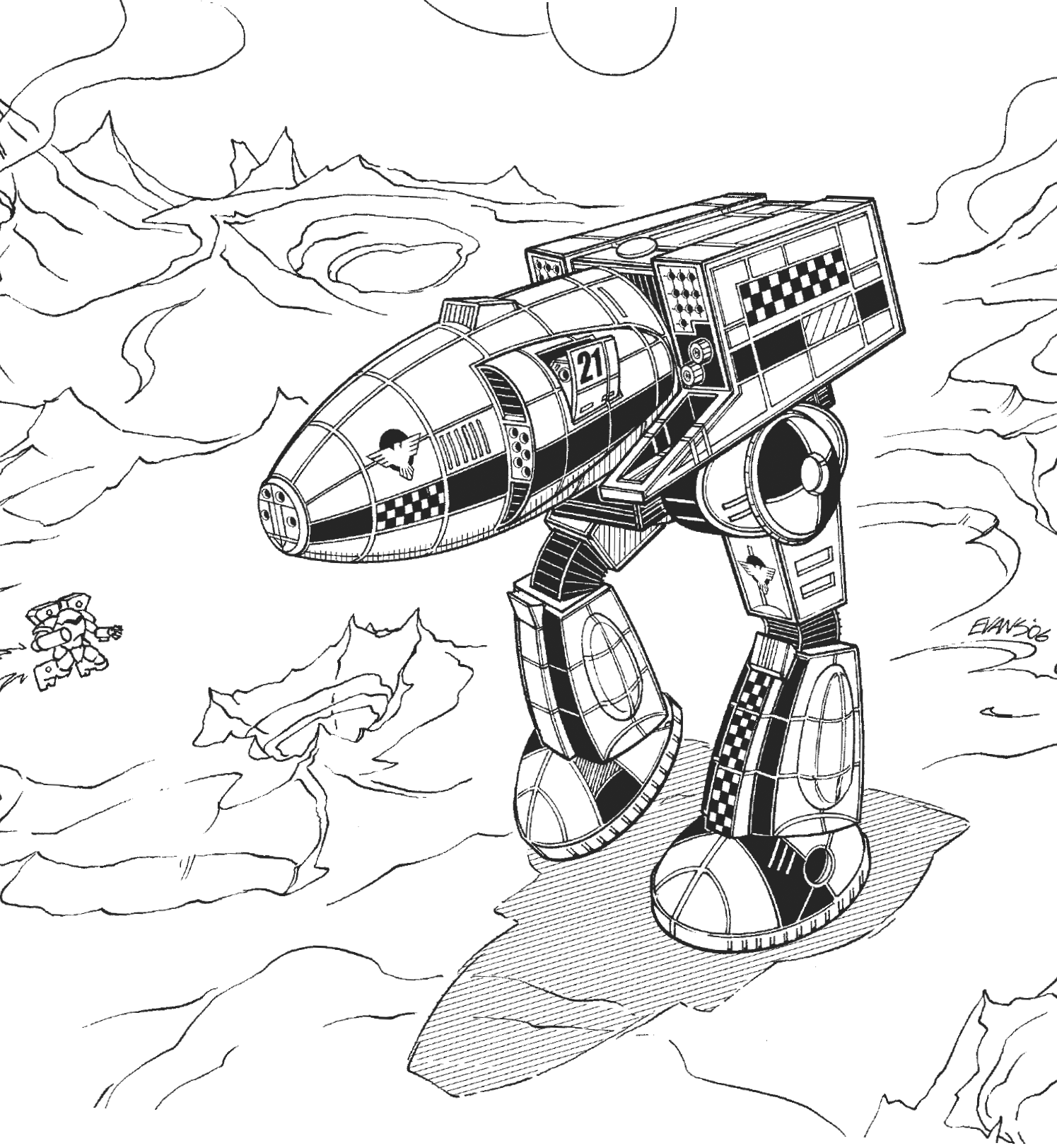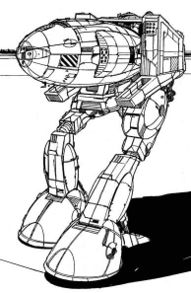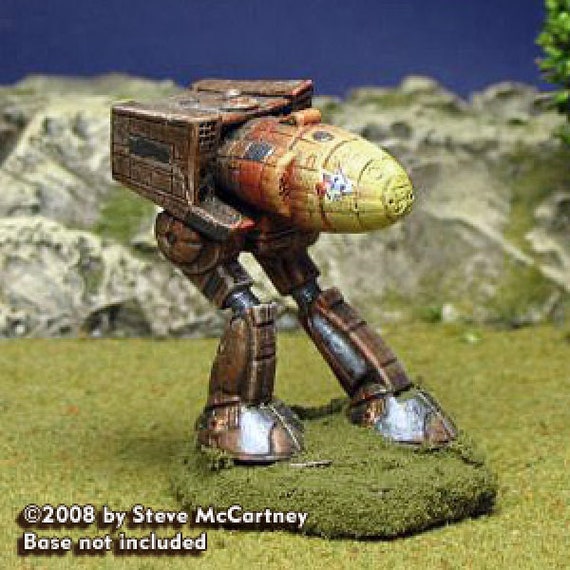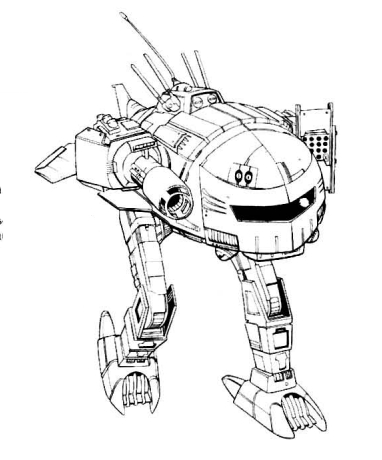Hud interaction change for all weapons
Cooldown bar will be replaced with "Weapon Heat bar". This includes the by crosshair pips
Rather than starting full after firing and slowly depleting, it will start empty and fill as you fire. If it hits 80%, it is overheated and may lockout.
If it exceeds that point too far or hits 100%+, whether due to override or from firing while very close to too hot, it will suffer an overheat penalty.
Each weapon has a finite amount of "overheat" health. Depending on its depletion, it would need repairs or replacement (lost).
Override mechanic change.
In Battletech, there is no "override shutdown." In the lore the override is for the weapons safety lockout to prevent a shutdown, prevent you from overheating the machine to the point that you will die.
There are now two overrides.
Override selected weapons group -- all weapons within the selected group will have its safety lockout overridden, allowing you to fire until the weapon either ceases working (master lockout) or destroys itself.
Override reactor lockout. After riding above 80% reactor heat for a short period of time, all weapon systems are locked and many other systems shift to minimal power mode. This is because the heat level is unsafe for the pilot as well as the reactor, and if this temperature is sustained for too long it is likely that ammunition will begin to cook off. Power for movement is sustained in order to allow the pilot to try and withdraw to a safer location, but at some point the mech's mobility will also begin to suffer.
->If more than 80% heat is sustained for an unspecified period of time, the pilot may suffer possible heatstroke represented through a number of ways with the most disturbing of which being hallucinations. Beyond this, both the mech and the pilot will become sluggish and it may be easy to become disorientated. This becomes progressively worse over time.
Shutdown.
There are three situations in which a shutdown may occur.
1) The reactor reaches 100% heat. The reactor will cut off and will not be able to be activated again until it reaches 46% heat. When the reactor cuts off, the mech will literally lock into place which may cause you to fall over.
2) You have pulled too much energy at once. While it would take an extreme to achieve this, it is possible. The behavior is identical to 100% heat. However regardless of the level of heat, a manual restart may be required. (Requires the emergency activation function to be implemented first, though may simply use a timer.)
3) You have been hit with a Mech Taser. Mech Tasers are equipment that will only be supplied to infantry groups, and requires a support weapon to be set up. Infantry need time to do this so ignoring infantry for too long can allow them to set one up. If your mech gets tased, depending on the severity and the size of the mech's powerplant, you may be disabled, you may have some systems fry, and other unpleasant side effects. If a squad of infantry reach a mech that is powered down by Mech Taser, the mech is done for.
Emergency activation: A consideration to allow a manual restart of the reactor in the event of an emergency. If implemented, it is likely very few mechs will have this feature and it may be Alien-Isolation-esque in its implementation.
How MGs and autocannons will work.
Hud/weapon change
The ammunition display will be modified to reflect the current amount of ammunition in the loaded cassette and the number of reloads you have available.
If for some reason it doesn't work as anticipated, you'll see instead the current amount of ammunition in the loaded cassette and the total ammunition not yet loaded.
"Belt-fed" weapons will have a similar treatment, however the number after the slash will represent the number of tons of ammunition instead of individual cassettes.
When the ammunition count on the left depletes to 0, the weapon locks out to "reload." Once reloaded, the weapon will be functional again. A different color on the "heat bar" (formerally the cooldown bar) will represent the time for reloading.
Range:
MGs are given two ranges, the effective range against BAR 1 armor and against BAR 10 armor. BAR 10 is the armor level of Mechs, beyond this range effectiveness against mechs is significantly impaired to non-existent. BAR 1 is armored infantry, the weapon will have full effect out to that range against infantry, tapering off from there.
Autocannons are not limited by their expected accuracy range as a "this is the full damage range." The typical AC can go out to about 2,000 meters. Autocannons have individual ranges and velocities which help to dictate what their actual ranges are. Their given range reported on the mechlab will tell you the range of the AC in question after which the maximum damage potential is lost. From that range onward, it will begin to lose kinetic potential, meaning it won't hit as hard. Most AC shells also pack an explosive element, once kinetic potential is completely lost the explosive element is the end point of what the ammo can do, which without penetration under the armor.. is hardly going to do anything at all but can still kill softer targets at extreme ranges.
Autocannons using ammunition without explosive elements tend to have higher kinetic potential and are instead reliant on penetrative damage, these may go further but the lack of explosive potential means they may simply bounce off. Rifles exhibit this behavior.
In a vacuum, kinetic energy is not lost over range.
How lasers will work.
Hud/weapon interaction
Laser will raise heat in the "Weapon heat bar" (formerly the cooldown bar), and will stop functioning for a required cooldown time on the shot that touches the "too hot line." Most lasers will find it difficult to overheat to the point of negative consequences, but if the firing is spaced out a bit to allow for some weapon cooldown, it is possible to fire enough times to exceed the "too hot" line. In doing so you will also have accumulated higher damage delivered to the target. (If the standard is three shots, but you managed to get 4 or 5 before the weapon locks out, that's 133.33% or 166.67% of the damage output expected of the weapon.) Some lasers can do this easier than others, and some cannot do it at all.
Range:
Most lasers can be somewhat effective to twice its stated range. In vacuums, four times its stated range.
However, elements such as dust, smoke, fire, storms, water, etc. will degrade the laser's damage potential as it passes through. Anti-Laser Aerosols are a counter measure that can be used by mechs, vehicles and aircraft alike that can significantly reduce your potential laser damage. When firing beyond the stated range, the negative affect of these atmospheric or artificial obstacles to your laser are doubled.
Sustained beam
This type of laser relies on a low-peak, sustained beam to deliver its damage and functionally fires similar to a Star Trek phaser. The beam can last up to 2 seconds, though usually many are done in a second. The damage per 0.1 seconds is considerably lower high-peak pulse-type beams, however, the weapon fire is continuous allowing for correction of aim and streaking large areas with death. It is up for consideration whether the beam just fires until it is done, or if the user should be able to activate and deactivate the beam by holding and releasing the firing button. The concept for doing this is to be able to deactivate the laser before it overheats, allow it to cool a little and milk that for additional damage before it overheats.
Short beam type
A beam of under 1 second, with a longer firing delay than a sustained beam and more power within the shorter window of fire. Leaves no user control to disconnect the beam.
Pulse-type
Fires individual shots, typically with a short 'priming' time to excite the laser and build up its power for a high-peak release. These lasers manage to do significant damage with beams lasting 0.3 seconds or less, have a firing delay between trigger pull and firing, which is fed to you by a sound of the weapon filling its capacitors and sending the energy through the lasing medium to excite it before release.
Projection pulse
An extremely rare type of weapon that combines elements of a laser and a PPC. Fires a sort of laser "projectile". It has elements of both a laser and a PPC, with only some of the advantages or disadvantages of either.
Long pulse type.
A pulse type distinction intended to inform you that you're looking at both the longest pulse of a pulse type class, as well as a longer priming time. These have the trade off of the highest amount of damage for a pulse-type laser weapon. Think Halo's Spartan Laser, usually with less charge time.
Repeater Pulse-type
Fires a rapid, low-energy-draw, no-delay 'pulse' that is particularly weak but able fire as rapidly as you pull the trigger or at a set rate if held. This can allow the possibility of pumping a lot of burst damage in a very short period of time at high risk or to be able to fire on command when needed without issue. On a standard laser class, these tend to be underpowered but trade the power for the energy efficiency and spammery without the extra weight or heat. Think Star Wars blasters, but usually without the umph.
Rapid pulse (laser chaingun)
Usually a beam type similar to the standard pulse type, however there is a noteworthy 'priming' time and the weapon fires more like a heavy caliber machine gun, all the while having reasonable damage per shot. The laser can be stopped at any time but the remaining energy still needs to be discharged and the weapon still needs to prime again to be fired once more.
Power pulse type
A laser with the longest pre-fire charge time followed by a delivery of substantial damage in an impossibly short pulse time. These are rare and typically are both the slowest firing and most infrequently firing lasers to be found.
ER lasers.
Can achieve three times stated range with a linear degradation over distance. Six times in vacuum.
Functionally they are similar to standard lasers. However, they take longer to 'excite', will be able to carry further and push through atmospheric debris / anti-laser aerosols better. It isn't until the 2x range mark that these will have "double degradation" to the ER lasers.
How pulse lasers will work differently than standard lasers.
Are only 25% affected by atmospheric conditions.
Have shorter charge times whenever a charge time exists against comparable standard lasers of similar power.
Can achieve faster firing rates against comparable standard lasers of similar power.
It is easier to "pace" a pulse laser to try and achieve more damage before the weapon overheats.
Pulse lasers begin losing effectiveness at their stated range, but can reach to 2.5 or 3 times their stated range. 5 to 6 times in a vacuum. (This means pulse lasers can do some damage out to the same range as standard lasers, but by then the pulse laser is so weak it isn't worth the heat you are generating). This is because low energy lasers are significantly less affected by bloom than high energy lasers.
How missiles will work.
Heat seeking missile: Seeks out heat sources. The hotter the target is, the stronger its "pull." These missiles are not locked and are fire-and-forget. However, they will go for the hottest target on the field including your own team mates. Open flames may draw heat-seeking missiles or distract them.
Basic missile variants:
- Ballistic missile (standard LRM variant) Fired into the air, from which their decent is without thrust or power. The least likely missile to be tracked by AMS or to set off missile warnings. Also among the least accurate.
- Fire and Forget: Simply fire in the general direction of your intended target. Will automatically try to pursue the target closest to its flight path. Fairly accurate but frustrating if there's more than one potential target. Can be locked to ensure it goes after the appropriate target.
- Heat-Seeking: Tracks hot targets. Don't fire near volcanic heat sources. Extra accurate on cold maps, except during storms. Easily tricked.
Artemis-IV missile:
A fancy remote control targeting suite that uses a laser range finder to paint a target and uses the onboard targeting computer to steer the missiles remotely. Unlike standard LRMs or SRMs, the target must be painted, locked and held for best results. ECM can break this control anywhere along the LoS to the target and LoS to the missiles themselves. Artemis missiles affected by ECM become standard fire and forget missiles, with the associated reduced accuracy.
Streak SRMs
A missile launcher that pre-programs a flight path into the missile prior to launch. Unaffected by ANY jamming equipment (in the timeline).
Listen-Kill Missile
Begins to appear as early as 3029 as prototypes in some areas and in large numbers by a specific pair of factions in 3038, this really expensive missile is quite accurate and uses sound to track its targets. Counter-efforts begin to appear in 3039, and counter measures are commonly available by 3040.
Tandem Charge missiles
An armor piercing missile that can be equipped to SRMs (and MMLs some day). At 5 times the expense of a standard missile, this isn't cheap and is rarely if ever used. If you should get your hands on some, consider it your ace in the hole. Decent tracking capabilities. Satisfying boom.
https://www.sarna.ne...-Charge_Warhead
Inferno Missile
They combine flammable chemicals with an adhesive compound to shower their targets with a burning gel. This gel is designed to increase a 'Mech's heat levels to the point where the DI computer shuts down the 'Mech's Fusion Engine. Inferno rounds are also effective at turning combat vehicles and battle armor into flaming coffins for their crews, and are devastating against conventional infantry platoons.
https://www.sarna.net/wiki/Inferno
Tear Gas Warhead
Useful for creating a barrier/trap against infantry. Ideal for missions that may involve lots of infantry, or disturbing the civilian population without killing them.
https://www.sarna.net/wiki/Tear_Gas
Thunder (LRM)
Classified.
https://www.sarna.net/wiki/Thunder_LRM
Swarm (LRM)
{Redacted due to file corruption} Comstar would like to appologise for this inconvenience.
https://www.sarna.net/wiki/Swarm_LRM
Smoke Warhead
(A consideration, for some reason only seems to be available post 3057..)
https://www.sarna.ne...i/Smoke_Warhead
Semi-Guided LRM
Will be planned and developed, but is not intended to release before DLC or modded expansions to the timeline.
https://www.sarna.ne...Semi-Guided_LRM
Fragmentation Missile
A particularly rare missile in storage at certain Marik facilities designed to have a massive 'clearing' effect against infantry.
https://www.sarna.ne...ntation_Missile
Magnetic Pulse Warhead.
Developed in 3050 to mess with electronics...
https://www.sarna.ne...c-Pulse_Warhead
Retro-Streak Warhead
Anti-streak missiles. Available in the 3040s.
https://www.sarna.ne...-Streak_Warhead
Follow the Leader Warhead
A type of missile found most efficient in stream-launchers where once the first missile picks a spot and lands, all other missiles will land in that same spot if possible.
https://www.sarna.ne..._Leader_Warhead
Dead fire missiles
Missiles with the guidance systems replaced with as much explosive material as could fit. These can be fired directly at a target or at a ballistic launch angle for indirect fire.
Anti-TSM missiles
Appears in 3028 as a countermeasure to a specific kind of triple strength myomer. Probably will not find a use in this mod.
Acidic Warhead
Developed in 3050 and mass production in 3053, it is unlikely that this would be released for this mod, however, this weapon is effective against Ferro-armor which would give the Davions an edge against the Clans.
https://www.sarna.net/wiki/Acid_(AX)_Warhead



 Nesutizale, on 07 December 2019 - 02:27 AM, said:
Nesutizale, on 07 December 2019 - 02:27 AM, said:



 Koniving, on 06 December 2019 - 01:37 PM, said:
Koniving, on 06 December 2019 - 01:37 PM, said:



 Karl Streiger, on 07 December 2019 - 08:27 AM, said:
Karl Streiger, on 07 December 2019 - 08:27 AM, said:



.jpg)
 Karl Streiger, on 07 December 2019 - 08:27 AM, said:
Karl Streiger, on 07 December 2019 - 08:27 AM, said: Koniving, on 07 December 2019 - 12:26 PM, said:
Koniving, on 07 December 2019 - 12:26 PM, said:



 Koniving, on 13 December 2019 - 06:50 PM, said:
Koniving, on 13 December 2019 - 06:50 PM, said:
 Koniving, on 13 December 2019 - 06:15 PM, said:
Koniving, on 13 December 2019 - 06:15 PM, said: Pseudo98, on 13 December 2019 - 07:12 PM, said:
Pseudo98, on 13 December 2019 - 07:12 PM, said: Pseudo98, on 13 December 2019 - 07:12 PM, said:
Pseudo98, on 13 December 2019 - 07:12 PM, said: